In the modern world there are many medical and social problems that arise unpredictably and have a specific course, one of them is the disease of civilization - psoriasis. This disease occurs in 1, 5 - 2% of the population of progressive countries, spreads equally between men and women and manifests itself regardless of the age of the patient.
What is psoriasis or psoriasis?
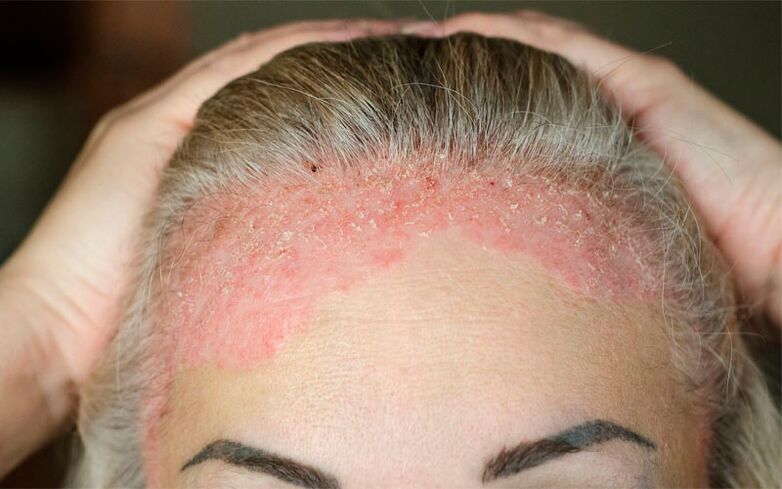
Psoriasis or psoriasis is a genetic skin pathology that is based on a chronic recurrent inflammatory process of the skin (impaired keratinocyte maturation) caused by the influence of trigger factors. The localization of rashes is extremely versatile, the localization of foci of psoriasis can occur both on the oral mucosa and on the scalp, extensor surfaces of the limbs, nails or all over the body.
Because psoriasis is a systemic disease, the lesion will also be characteristic of the cardiovascular, nervous, musculoskeletal, and other systems. In addition, the manifestation of the disease in 80% of cases in the initial stages is the defeat of the scalp, so in this article we want to pay special attention to the specified localization of psoriasis.
Causes of psoriasis of the head
There are 2 types of psoriasis: early and late. The early type is genetically determined, heredity plays a significant role here. It is known that the presence of the disease in one parent increases the risk of psoriasis in a child by 14%, and in psoriasis in both parents - by 40%.
There are more than 100 factors for the appearance of scaly lichens, the most common of which are:
- genetic
- viral
- infectious (tonsillitis) and allergic
- stressful (psychosomatic)
- endocrine
- metabolic disorders (lipids, enzymes)
- immune disorders.
Symptoms of scalp psoriasis

A characteristic element of psoriasis is a symmetrical flat rise above the surface of the skin with uniform rounded borders and increased roughness, combined with a large number of easily removable silver scales. The size of the rash can vary from 1 mm to 2 cm, due to which the formations often merge and form plaques with different configurations, which can reach 10 cm or even 20 cm.
A common phenomenon in psoriasis is the so-called "psoriatic crown" - the transition of neoplasms to the smooth skin of the neck or temporal area along the hairline. Itching is a pronounced symptom that is common among patients with scalp psoriasis.
Psoriasis is defined by three leading symptoms (psoriatic triad):
- "Stearin stain" - psoriatic plaque is scraped with a glass slide, as a result of which the scales become thinner, which enhances the snow-white color of the surface and resembles a drop of frozen stearin.
- "Final foil" - with further scraping a smooth translucent surface will be observed.
- "Bloody dew" - the presence of small droplets of blood when scraping.
Stages of development of psoriasis
The psoriatic process consists of 3 consecutive stages:
- i progressive
- II motionless
- III regressive
Progressive stage
It is characterized by the formation of new papules with increased diameter. The peeling process does not extend to healthy areas of the skin, while leaving a narrow pink stripe on the periphery of the plaques. The main symptom in patients is itching. Also, the progressive or acute stage of psoriasis is characterized by the presence of the Koebner phenomenon - the formation of new papules 7 days after skin injury. There is a psoriatic triad of symptoms.
Stationary
At this stage there are no new elements of the rash, the manifestation of itching decreases or disappears completely. Diagnosis of the psoriatic triad is problematic and Koebner's symptom is negative.
Regressive
In the regression stage, the peeling decreases, the plaques disappear, but hypopigmented spots form. No psoriatic symptoms were detected. It is worth noting that even after the regression stage, "duty plaques" remain in the scalp, knees and elbows.
Stages of the disease according to the degree of damage
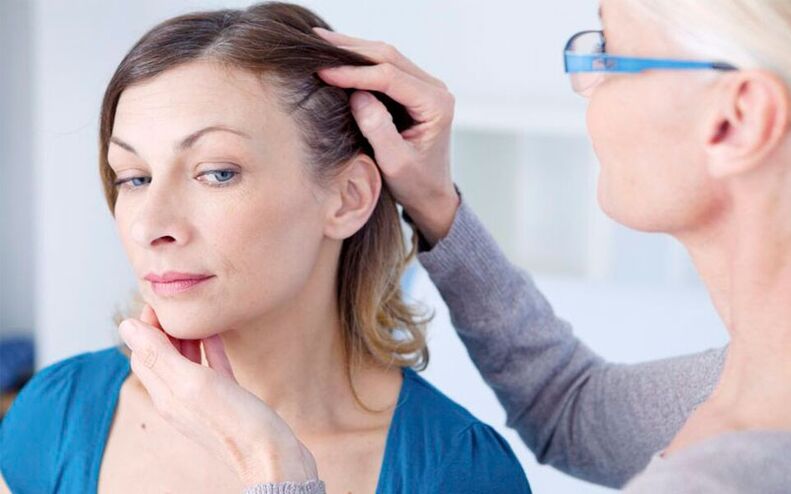
Depending on the area of the lesion, there are 3 stages of psoriasis:
- mild - less than 3% of affected area
- average - the prevalence of papular rash is from 3 to 10%
- severe - the lesions are localized on more than 10% of the skin.
How to cure psoriasis of the head
There are various combined methods for medical and non-drug treatment of psoriasis, aimed at minimizing the lesions, improving the quality of life of the patient and reducing the frequency of relapses.
The treatment of psoriasis depends on the extent of the skin lesions, the shape and age of the patient. If there are additional pathologies of organs and systems, they are corrected. Patients are prescribed a diet with limited salt, fatty and high-carbohydrate foods.
Medical therapy
Effective means for systemic therapy of psoriasis are the following:
- desensitization (30% sodium thiosulphate solution),
- sedatives (valerian infusion, tranquilizers),
- antihistamines,
- diuretic,
- vitamins (A, B1, B12, B6, E, C),
- hepatoprotectors,
- pyrogenic preparations,
- immunostimulating drugs,
In the acute general form of psoriasis, as well as in erythroderma, short-acting corticosteroids (triamcinalone) are prescribed.
Non-steroidal anti-inflammatory drugs (diclofenac sodium, voltaren, nimesulide) are indicated for damage to the musculoskeletal system (joints).
Cytostatics (metatrexate, azathioprine) are used to treat complex forms of psoriasis.
In severe forms of psoriasis (index greater than 15 units), cytostatics, tranquilizers and aromatic retinoids are added to the therapy. Glucocorticosteroids are used in critically complicated episodes of scalp psoriasis.
In mild cases of psoriasis (PASI index up to 15 units), hyposensitizing drugs, detoxifying and antihistamines, as well as hepatoprotectants are used.
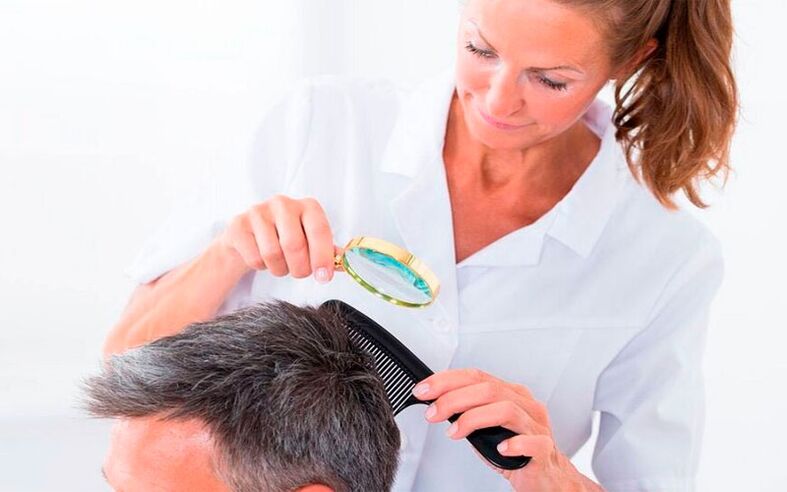
The use of topical treatment depends on the stage of scaly lichen:
- progressive - 1 - 2% salicylic ointment, corticosteroid creams and ointments
- stationary - 5 - 10% naphthalene ointment, 3% salicylic ointment, 2 - 5% sulfur-tar ointment, baths with chamomile decoction
- regressive - 3-5% salicylic ointment, 10-20% naphthalene ointment, 5-10% sulfur-tar ointment, psorcutane
Mercury-salicylic ointment, lotion and shampoo Psorix, tar conditioner, zinc preparations are widely popular in scalp psoriasis. Also an integral part of the treatment of the disease are warm baths once every 2-3 days. In the winter form of psoriasis therapy is based on the use of ointments in combination with ultraviolet radiation.
Non-drug treatment
The treatment of psoriasis is not only based on drugs. The use of phototherapy methods also contributes to the rapid recovery and remission.
There are the following types of radiation:
- Photochemotherapy (PUVA therapy) is a type of phototherapy in combination with the use of photosensitizers. The mechanism lies in the action of ultraviolet radiation on the surface of the skin for the treatment of complex forms of psoriasis.
- Selective therapy is more effective in treating exudative and simple forms of psoriasis when there are a small number of rashes. The course of therapy consists of 20-30 sessions, the effectiveness is 80%.
- Narrowband therapy - applied in the presence of superficial psoriasis, the rays do not penetrate deep into the skin balls, but have only a superficial effect. The procedure is aimed at preventing the processes of malignant cell degeneration.
- Narrow spectrum UVB treatment - This type of therapy significantly reduces the occurrence of side effects such as redness and burns. The course of the procedure is 20-30 sessions, used only for skin lesions.
Also a positive effect comes from spa treatment. Well-known sources of treatment are Lake Kunigunda, the Crimean coast, the Black Sea and the Dead Sea.
Experimental methods
Scientists continue to look for new effective methods of treating psoriasis, including the following.
plasmapheresis
Gentle intoxication procedure that helps cleanse the blood plasma of pathogenic components and toxins. After one procedure, as a rule, up to 30% of the blood is cleared. This manipulation is used in severe and complex cases of psoriasis. The course of plasmaphoresis is conducted in 3-6 sessions, with a break for one week.
The mechanism of this procedure is as follows: certain membranes filter the intercellular fluid and return it to the bloodstream, while the useful components are preserved as much as possible and pathogenic toxic substances are destroyed.
Cryotherapy or "cold treatment"
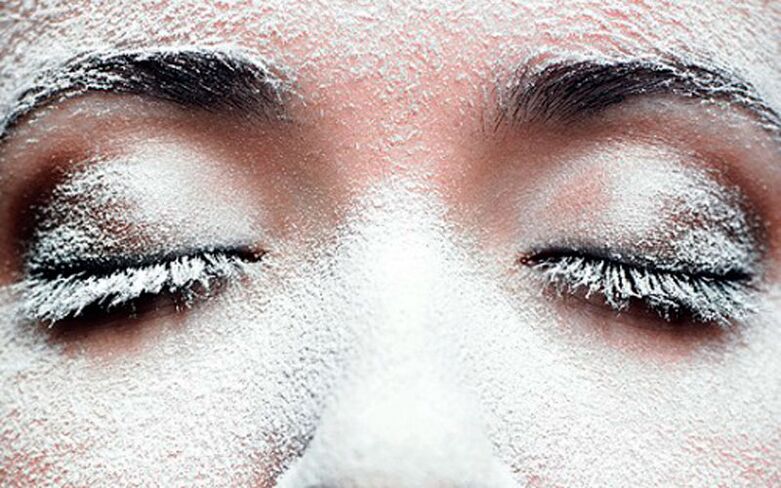
The treatment of the disease is due to the effect of ultra-low temperatures on the body. The sharp effect of the cold helps to activate the immune system and stimulate the metabolism as a whole. This procedure has both a complex effect on the whole body and a local one, aimed at the focus of skin lesions.
It is important to keep in mind that cryotherapy is not suitable for all patients. Due to the anatomical features of the location of the vessels, some people experience spasm, swelling and abrupt dilation of the vessels, as a result of which blood circulation is disrupted. In addition, some patients may be prone to allergic reactions such as cold urticaria.
Effect of cryotherapy:
- increase the body's defenses
- improved regeneration processes
- negative symptoms disappear: itching, burning, peeling
- improves metabolism in the skin
- prolongation of periods of remission.
Immunobiological preparations
These are protein-based products that have a direct effect on the immune system and prevent the occurrence of concomitant diseases. In the presence of a psoriatic process, the body is constantly replenished due to excess TNF-protein. These drugs inhibit the effects of TNF-α, so that the symptoms of the inflammatory process in psoriasis are reduced.
Ozone therapy
A new effective method of treating psoriasis. Ozone is known to have detoxifying, anti-inflammatory, antiplatelet, immunomodulatory effects. The advantages of ozone therapy are ease of use, fast effectiveness, reliability and complete absence of side effects.
Characteristics of the treatment of psoriasis in children and adolescents
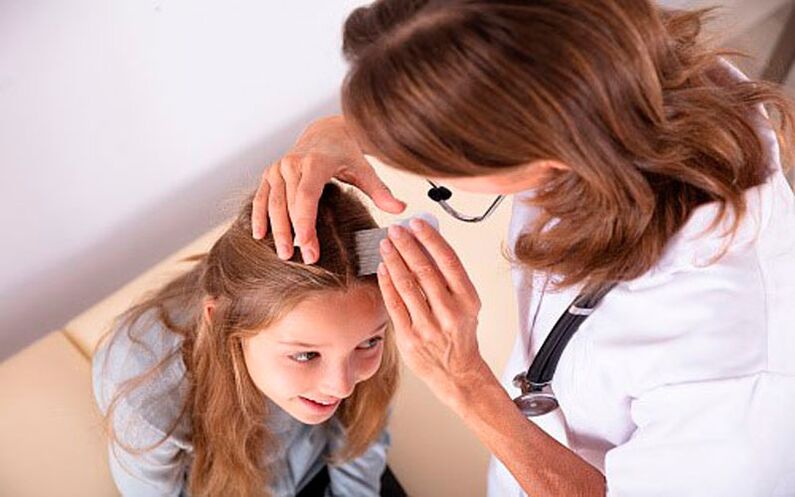
It should be noted that psoriasis is less common in children than in adults. The explanation is the low detection rate of psoriasis, frequent regressions and significant periods of remission up to 12 years.
The characteristics of the clinical picture of childhood psoriasis are frequent lesions of the skin under the hair. Girls get sick twice as often as boys, which is associated with endocrinopathies that occur during adolescence. Children are characterized by a pronounced picture of the pathological process (significant inflammation and varying degrees of itching).
In children under the age of 10, the symptoms of psoriasis are different from those in adults. The localization of the rash occurs in atypical places such as the face, back of the head, genitals or deep areas of the subcutaneous folds. The mechanism for triggering the disease is often an acute infection (influenza, pneumonia), psycho-emotional stress.
In most children, the first signs of lesions appear on the scalp and are accompanied by redness, scaling of scales. Even in the most severe cases of scalp psoriasis, hair loss is not common.
The treatment of childhood psoriasis is based on the use of healing ointments and creams; in severe episodes, a combination with other drugs is used. This approach allows you to reduce the negative manifestations of the disease and contributes to rapid recovery.
How to treat psoriasis of the head at home

In the fight against dry scalp in psoriasis, various base creams, lotions, herbal shampoos, water-based emulsions are used, which not only relieve skin inflammation, but also help relieve the symptoms of psoriasis.
The most popular home remedies for psoriasis are creams, salicylic ointment and special shampoos.
Creams
Use non-hormonal remedies based on natural ingredients. The active ingredients can be different, the most common of which are:
- zinc - quickly removes dryness and inflammation of the skin, has antiseptic properties, has an antibacterial effect
- Vitamin D - used to treat simple forms of psoriasis, relieves such unpleasant symptoms as flaking and itching, and also helps to improve regeneration
- urea and naphthalene - has a tonic and soothing effect on the skin
- herbal extracts - have disinfectant properties, eliminate hypersensitivity and exacerbation of the inflammatory process
- floralisin - promotes rapid recovery, relieves the unpleasant symptoms of psoriasis
- urea and beeswax - suitable for sensitive skin in need of hydration and nutrition, restore the protective barrier
Salicylic ointment in the fight against psoriasis
Salicylic acid, derived from willow bark, is the active ingredient in salicylic ointment and has anti-inflammatory and regenerating properties. The advantage of salicylic ointment compared to hormonal drugs is the lack of side effects.
Positive properties of salicylic ointment:
- fights inflammation - removes itching and redness
- antiseptic action - eliminates pathogenic microorganisms
- keratoplastic effect - prevents the appearance of purulent foci, promotes the regeneration process.
- destroys the horny substance - exfoliates the crusts.
Salicylic-zinc ointment is also widely used in the treatment of psoriasis and is no less effective.
Shampoos
There are the following types of shampoos for the treatment of psoriasis of the scalp:
- Based on birch tar. Tar helps to gently cleanse the skin of the stratum corneum, dirt, removes itching and burning and has antifungal properties.
- Antifungal - the main active ingredient ketoconazole eliminates the reproduction of fungal infections and promotes healing of wounds on the skin.
- It consists of salicylic acid, ketoconazole, zinc. This spray shampoo eliminates the inflammatory process, softens the skin and has an antiseptic effect.
- Healing. Normalizes the secretion of subcutaneous adipose tissue, strengthens hair, relieves inflammation.
It is also important to remember that when washing your hair with psoriasis, you should use only warm water, not hot. It is necessary to minimize the use of hair dryers, curling irons and ironing.
Treatment of psoriasis with folk remedies

Lotions based on celandine, aloe vera, chamomile, apple cider vinegar are great for treating psoriasis. A bandage moistened with a solution is applied to the lesions. This procedure reduces inflammation, kills pathogens and improves metabolism in the skin.
Also no less effective are the masks of kefir and mud, which also act as part of traditional medicine. Such masks additionally moisturize the hair, have an anti-inflammatory effect, improve blood circulation in the scalp.
Which product is better?
For the treatment of scalp psoriasis it is better to use soft, gentle products without fragrance. Regular cleansing and moisturizing is the basis of proper hair and skin care for psoriasis. It is important that the products used help to normalize the balance of nutrients, restore the affected areas of the skin, maintain the pH of the scalp and moisturize the stratum corneum of the epidermis.
All these effects and even more are typical for the products from the online store Fitomarket. Here you can choose not only the most appropriate means and methods of high-quality care for scalp psoriasis, but also get the right advice on the drugs that are right for you.
FAQ
Can psoriasis be cured with zinc ointment?
Zinc ointment has anti-inflammatory, antiseptic, enveloping effect, promotes the formation of a protective layer on the skin surface. If you lubricate the affected areas daily with zinc ointment, the positive effect will come quickly, but this drug is not able to completely cure psoriasis, as treatment must be complex.
Can you cure scalp psoriasis with hydrogen peroxide?
Hydrogen peroxide, releasing active oxygen, performs mechanical cleansing and removes toxic substances on damaged skin, but, as in the case of zinc ointment, will not work to treat scalp psoriasis with this component alone.
Is psoriasis contagious?
Psoriasis is not transmitted because it is non-infectious, so avoiding contact and communication with people with this disease is not worth it.
Is scalp psoriasis dangerous?
If left untreated, psoriasis can lead to serious complications and even death. Remember that psoriatic lesions can spread to the deep layers of the skin, as well as other organs and systems of the body (nails, cardiovascular system, musculoskeletal system, etc. ).
How to distinguish psoriasis from dermatitis
Seborrheic dermatitis of the scalp is known to never affect smooth skin and is characterized by a lack of infiltration, unlike seborrheic psoriasis, which forms a "psoriatic crown" that extends to smooth areas of skin on the forehead and neck. . It is worth noting the hereditary factor for the appearance of psoriasis.























